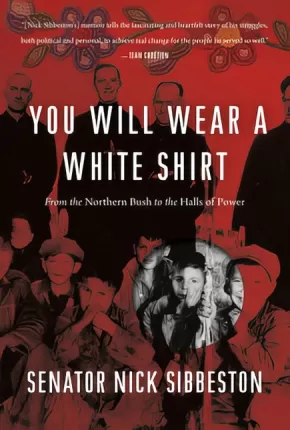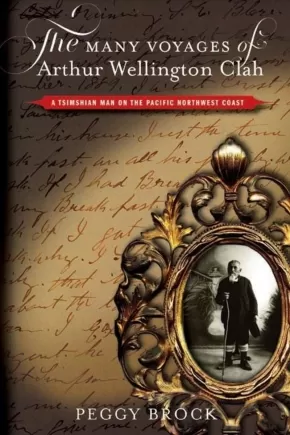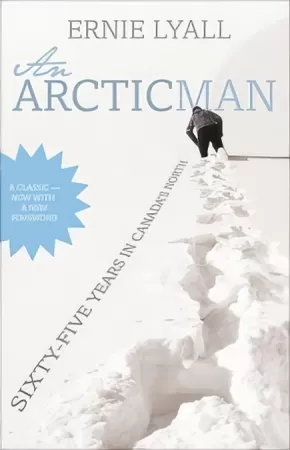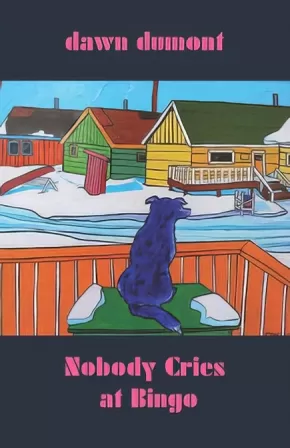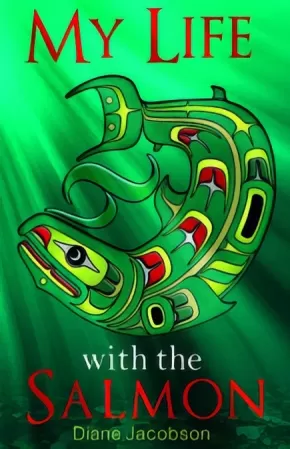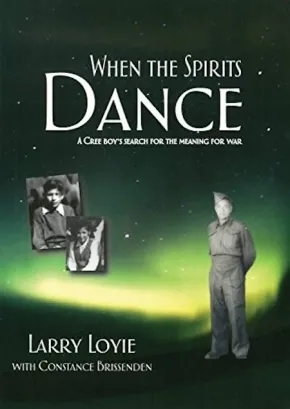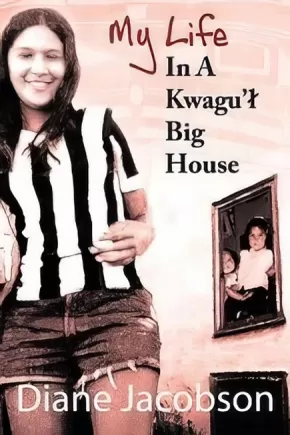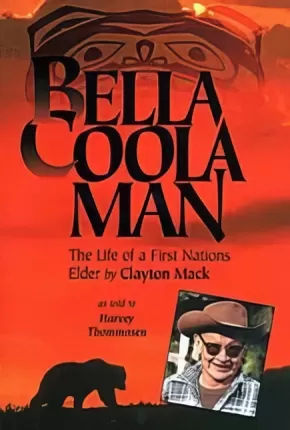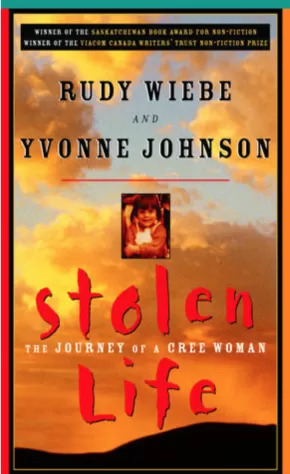Autobiographies
Synopsis:
Francis Pegahmagabow (1889–1952), a member of the Ojibwe nation, was born in Shawanaga, Ontario. Enlisting at the onset of the First World War, he became the most decorated Canadian Indigenous soldier for bravery and the most accomplished sniper in North American military history. After the war, Pegahmagabow settled in Wasauksing, Ontario. He served his community as both chief and councillor and belonged to the Brotherhood of Canadian Indians, an early national Indigenous political organization. Francis proudly served a term as Supreme Chief of the National Indian Government, retiring from office in 1950.
Francis Pegahmagabow’s stories describe many parts of his life and are characterized by classic Ojibwe narrative. They reveal aspects of Francis’s Anishinaabe life and worldview. Interceding chapters by Brian McInnes provide valuable cultural, spiritual, linguistic, and historic insights that give a greater context and application for Francis’s words and world. Presented in their original Ojibwe as well as in English translation, the stories also reveal a rich and evocative relationship to the lands and waters of Georgian Bay.
In Sounding Thunder, Brian McInnes provides new perspective on Pegahmagabow and his experience through a unique synthesis of Ojibwe oral history, historical record, and Pegahmagabow family stories.
Awards
- Fred Landon Award, Ontario Historical Society (2018)
- American Book Award, Before Columbus Foundation (2017)
“Debwemigad Nimkiig gaye Aadizookanag zhawenimaawaad. Brian McInnes has clearly been blessed by the Thunders and Great Storytellers. With Sounding Thunder he has achieved the perfect balance of personal memoir and scholarly inquiry. He shares with readers the stories that have connected one generation to another and in these cycles we find the truth about living. Dibaajimowinan omaada’oozhinang mii igo aanikoobijige.” – Margaret Ann Noodin, Assistant Professor, Department of English, University of Wisconsin
“Sounding Thunder is invaluable for those working in biographical, historical, Indigenous, military and political studies and the general reader. McInnes skillfully contextualizes his subject as one of Canada’s greatest war heroes as well as a member of his family, community, and Anishinaabe people.” – Brock Pitawanakwat, Assistant Professor, Department of Indigenous Studies, University of Sudbury
“Brian McInnes’ book is both elegant and masterful in its weaving of language, spirituality, storytelling, family, community, and physical place on the lands and waters of Georgian Bay as he presents the world and life of his great-grandfather, Francis Pegahmagabow. McInnes’ presentation of family stories in both Ojibwe and English, and his placement of them within their historical and geographical context, underlines Waubgeshig Rice’s claim in his foreword to Sounding Thunder that the book will remain ‘a vital resource for generations to come.’” – Jurors, Fred Landon Award, Ontario Historical Society
This book would be useful for social studies and history courses for students in grades 11 and 12 or at a college/university level.
240 pages | 6.00" x 9.00" | 31 b&w illustrations | 5 b&w tables | bibliography
Synopsis:
One of Canada's most passionate environmental and human rights activists addresses the global threat of climate change from the intimate perspective of her own Arctic childhood.
The Arctic ice is receding each year, but just as irreplaceable is the culture, the wisdom that has allowed the Inuit to thrive in the Far North for so long. And it's not just the Arctic. The whole world is changing in dangerous, unpredictable ways. Sheila Watt-Cloutier has devoted her life to protecting what is threatened and nurturing what has been wounded. In this culmination of Watt-Cloutier's regional, national, and international work over the last twenty-five years, The Right to Be Cold explores the parallels between safeguarding the Arctic and the survival of Inuit culture, of which her own background is such an extraordinary example. This is a human story of resilience, commitment, and survival told from the unique vantage point of an Inuk woman who, in spite of many obstacles, rose from humble beginnings in the Arctic to become one of the most influential and decorated environmental, cultural, and human rights advocates in the world.
Awards
- 2015 Ontario Historical Society Huguenot Society of Canada Award Winner
Reviews
"Loss, suppression and ultimate rediscovery of voice are themes that run through this courageous and revelatory memoir." —Naomi Klein, The Globe and Mail
"This is a book that needs to be read as the North becomes central to our future. It offers a perspective grounded in the culture and wisdom of northern people, seen through the lens of a remarkable woman as they seek to preserve 'The Right to be Cold.'" —Lloyd Axworthy, academic, former Minister of Foreign Affairs, and Nobel Peace Prize nominee
"This is a moving and passionate story from a committed woman who has bridged the ice age to the digital age. Her sophisticated views on the environment and the way the world works from her engaged involvement are brilliant and convincing." —The Right Honourable Adrienne Clarkson, journalist and former Governor General
Educator Information
This resource is also available in French: Le droit au froid: Combat d'une femme pour proteger sa culture, l'Arctique et la planete
Additional Information
|
Synopsis:
The compelling autobiography of Nick Sibbeston, residential school survivor and one of the North’s most influential leaders.
Growing up in a remote Northern community, Nick Sibbeston had little reason to believe he would one day fulfill his mother’s ambition of holding a career where he would “wear a white shirt.” Torn away from his family and placed in residential school at the age of five, Sibbeston endured loneliness, callous treatment and sexual assault by an older boy, but discovered a love of learning that would compel him to complete a law degree and pursue a career in politics.
As a young, firebrand politician, Sibbeston played an instrumental role during a critical moment in Northwest Territories politics, advocating tirelessly to support the economic and political development of First Nations people in the North, and participating in early discussions of the separation of Nunavut. Sibbeston’s career advanced in great strides, first as an MLA, then one of Canada’s first Aboriginal lawyers, then as a cabinet minister and eventually premier of the Northwest Territories. Finally, he was appointed to the Senate of Canada, where he continues to represent the people of Canada’s North, not least in advocating for the generations affected by residential school policies.
Although his years at residential school compelled Sibbeston to fight tirelessly for the rights of Aboriginal northerners, they also left a mark on his mental health, fuelling continual battles with anxiety, depression and addiction. It was only in later life that healing began to take place, as he battled his demons openly, supported not just by the medical community but also by his strong faith and the love of his wife and family.
Nick Sibbeston is a lawyer, distinguished member of the Northwest Territories (NWT) Legislative Assembly and a former premier. In 1970, Mr. Sibbeston was elected to a four-year term on the North West Territorial Council. And from 1979–91, he was elected to the NWT Legislative Assembly. Sibbeston has worked for the Government of NWT as Justice Specialist and as a Public Administrator for Deh Cho Health & Social Services and served four years on the Canadian Human Rights Panel/Tribunal. He is a current member of the Senate committees on Aboriginal Peoples, and Energy, Environment and Natural Resources. Mr. Sibbeston and his wife, Karen, live in Fort Simpson, NWT.
Additional Information
344 pages | 6.41" x 9.25"
Synopsis:
First-hand accounts of Indigenous people’s encounters with colonialism are rare. A daily diary that extends over fifty years is unparalleled. Based on a transcription of Arthur Wellington Clah’s diaries, this book offers a riveting account of a Tsimshian man who moved in both colonial and Aboriginal worlds. From his birth in 1831 to his death in 1916, Clah witnessed profound change: the arrival of traders, missionaries, and miners, and the establishment of industrial fisheries, wage labour, and reserves. His many voyages – physical, cultural, and spiritual – provide an unprecedented Aboriginal perspective on colonial relationships on the Pacific Northwest Coast.
Drawing on a painstaking transcription of Arthur Wellington Clah’s diaries, Peggy Brock pieces together the many voyages -- physical, cultural, intellectual, and spiritual -- of a Tsimshian man who moved in both colonial and Aboriginal worlds. Clah’s birth in 1831 coincided with the establishment of a permanent fur trade post, and he became student, teacher, and confidant to missionary William Duncan. Later, Clah’s spiritual voyage into the world of colonial culture transformed him into a devout Christian and an evangelist for the faith.
From the goldfields of BC and Alaska to the hop fields of Washington State, Clah witnessed profound change. His diaries reveal the complexities of personal interactions between colonizers and the colonized and the inevitable tensions within a community undergoing rapid change. They also show how Clah’s hopes for his people were gradually eroded by the realities of land dispossession, interference by the colonial state in cultural and political matters, and diminishing economic opportunities.
Taken together, Clah’s many voyages offer an unprecedented Aboriginal perspective on colonial relationships as they played out on the Pacific Northwest Coast.
This book is required reading for students and scholars of indigenous peoples and colonialism and anyone interested in BC or Canadian history.
Reviews
"The Many Voyages of Arthur Wellington Clah is a striking book offering an on-the-ground viewpoint of colonialism as it evolved on the Pacific Northwest Coast of Canada." - Susan Neylan, Wilfrid Laurier University, Journal of Colonialism and Colonial History, V. 13, No 2, Fall 2012
"A fascinating account...Peggy Brock has made a truly significant contribution to our understanding of the history of the northwest coast in the nineteenth century." - Robin Fisher, Mount Royal University, International Journal of Maritime History, Vol XXIV No 3
"Arthur Wellington Clah’s diary is likely the most remarkable document to come into the light of Pacific Northwest Coast history ... Surmounting the challenges presented by this rich and at times near impenetrable personal record, Peggy Brock has researched and admirably summarized fifty years of the diary, pulling out key themes and highlighting its many contradictions. This much-needed introduction to a man and an indigenous history of British Columbia and Alaska will change the way we think about our past." - John S. Lutz, author of Makúk: A New History of Aboriginal-White Relations
Clah’s life and diary offer a window into the lives of the Tsimshian political hierarchy of the time and Tsimshian society’s interaction with colonialism ... His voyage is a metaphor for the voyage that his own and other indigenous people were also taking in their encounters with colonialism." - Neil Sterritt, consultant in Aboriginal leadership and governance
Additional Information
324 pages | 6.00" x 9.00" | 19 photographs, 4 maps | Paperback
Synopsis:
Ernie Lyall was born in Labrador in 1910 and joined the Hudson's Bay Company at a time when it was expanding its presence in the Eastern Arctic. He spent many years as a front-line player with the company, building stores and developing trade with the local people. He became part of the Inuit community by marrying an Inuk and together with his wife Nipisha he raised a large family, some members of which play significant roles in today's Nunavut. Ernie's fluency in both Inuktitut and English made him a key interpreter and witness to many historic events in the Baffin region for over half a century, giving him insight into both sides of the cultural divide in the North and earning him respect from many quarters. In 1949 he and his family settled in Taloyoak (then known as Spence Bay) where he eventually left the HBC to become a wildlife officer with the Government of the Northwest Territories.
Ernie's story illustrates the realities of life for Inuit in the Canadian North during the last years in their camps on the land, a world that has now in large part been lost to history. His autobiography is unique in the perspective it offers and his original 1979 text is presented here with a foreword which provides new insights into Ernie's comments linking the old Inuit world with the new one in the modern Nunavut. Ernie's children reflect the cross-cultural bridging taught them by their parents and today contribute to the economic and community development of the North through a variety of roles, including leadership in the co-operative movement, land claim boards, business and government.
An Arctic Man not only tells about Inuit life as it was actually lived on the land but also illustrates how change, southern influences and the move into permanent communities impacted their society. This book offers a window onto the remarkable transition that occurred in the Canadian Eastern Arctic for much of the twentieth century with a frankness, insight and humour that was very much a part of Ernie Lyall's straightforward everyday style.
Synopsis:
Ruben Anton Komangapik is one of the Arctic's most gifted sculptors.
His work has been exhibited across Canada with pieces on permanent loan to the Museum of Nature and Culture in Montreal. In Isuma, Ruben's vibrant, provocative sculpture, and his artistic process, are brought to life by photographer Estelle Marcoux Komangapik's arresting images.
Part autobiography, part art object, this book will introduce Canadians to one of the Arctic's most talented young artists.
Synopsis:
In Nobody Cries At Bingo, the narrator, Dawn, invites the reader to witness first hand Dumont family life on the Okanese First Nation. Beyond the sterotypes and clichés of Rez dogs, drinking, and bingos, the story of a girl who loved to read begins to unfold. It is her hopes, dreams, and indomitable humour that lay bear the beauty and love within her family. It is her unerring eye that reveals the great bond of family expressed in the actions and affections of her sisters, aunties, uncles, brothers, cousins, nieces, nephews, and ultimately her ancestors.
It’s all here — life on the Rez in rich technicolour — as Dawn emerges from home life, through school life, and into the promise of a great future. Nobody Cries At Bingo embraces cultural differences and does it with the great traditional medicine of laughter.
Educator Information
Young adult fiction.
Recommended English First Peoples resource for grades 11-12 in the unit What Creates Family.
Additional Information
136 pages | 5.48" x 8.48"
Synopsis:
In March 2010 the Canadian Literature Centre hosted award-winning novelist and storyteller Eden Robinson at the 4th annual Henry Kreisel Lecture. Robinson shared an intimate look into the intricacies of family, culture, and place through her talk, "The Sasquatch at Home." Robinson's disarming honesty and wry irony shine through her depictions of her and her mother's trip to Graceland, the potlatch where she and her sister received their Indian names, how her parents first met in Bella Bella (Waglisla, British Columbia) and a wilderness outing where she and her father try to get a look at b'gwus, the Sasquatch. Readers of memoir, Canadian literature, Aboriginal history and culture, and fans of Robinson's delightful, poignant, sometimes quirky tales will love The Sasquatch at Home.
Reviews
"[Eden Robinson's] lecture reprises the Sasquatch theme from her novel, Monkey Beach. It is less a lecture than an extended poem – a love song to a place and people, a celebration of survival of places, names, and humans.... The work is filled with alternate narratives. Just when we are eagerly following a line of story or thought, out come Trickster-ish turns and teases.... Robinson seductively draws outsiders in, then sharply clarifies the limits of the welcome.... Eden Robinson brings her own literary ethics to the discussion [of the limits of cross-cultural sharing]. Her consciousness and conscientiousness permeate her fiction as well as the Sasquatch lecture. It is fitting that Paula Simons calls her 'one of Canada’s most provocative and talented writers' and also 'a moral and cultural force'." -Valerie Alia, Cantext, February 2012
Additional Information
64 pages | 14.00" x 23.00"
Synopsis:
Diane “Honey” Jacobson’s latest book is an important comment about First Nations efforts to save the salmon and her personal youthful journey to find meaning and a sense of place in life. Like the style in her first book My Life in a Kwagu’l Big House, Diane’s style in My Life with the Salmon is full of action, amazing adventures and fascinating connections between land, water and people. In My Life with the Salmon, we follow “Honey” through sometimes hilarious and sometimes difficult periods but we always learn a life lesson.
Awards
- 2012 Winner of the Independent Publisher Book Awards
Additional Information
176 pages | 5.50" x 8.47"
Synopsis:
When Lawrence's father goes overseas with the Canadian Army during the Second World War, the young Cree boy struggles to grow up while wrestling with the meaning of war. With Papa gone, Mama raises the children alone. Traditional foods like wild meat and fish are scarce and many other foods are rationed. Angry about the changes and confused about the future, Lawrence misses his father and his teachings about their natural way of life. When army runaways threaten the family, Lawrence's courage and knowledge of traditional skills are called upon to keep them safe. With guidance from his grandfather and encouragement from his grandmother, Lawrence faces his challenges, becoming wiser and stronger, and earning the respect of his elders.
Educator & Series Information
Recommended for grades 4 to 9.
This book is part of The Lawrence Series.
Additional Information
44 pages | 7.75" x 10.54"
Synopsis:
"'Wheee!!' Honey's cousin Phillip Boy was roaring with delight as they whizzed down the stairs on their homemade iron surfboard. Honey could only close her eyes when she saw Grandma Axu at the bottom of the staircase..."
Honey Jacobson considered herself lucky to live in the last semi-traditional Big House of the Kwagu'l people: a four-story home filled with a loving, extended family of cousins, uncles, aunts and the heads of the household, Grandpa Moses and Granny Axu. While new smaller houses were spreading throughout her community, Honey really knew only her relatives inside that Big House.
Capturing the fancy of Honey's community and family, the 1960s saw a Kwagu'l family inevitably changed by Western culture's spell. This is Honey's story.
Additional Information
191 pages | 6.00" x 9.00"
Synopsis:
When Clayton Mack was a child, his parents wrapped him in wolf skin and dumped him in water four times so he would grow up strong and fierce in the woods like a wolf. True to this Nuxalk tradition, Mack grew up to be a world-famous grizzly bear hunter and guide.
Clayton Mack''s first book of amazing tales about bears and q''umsciwas (white men), "Grizzlies and White Guys," became an instant best seller when it was published in 1993. In "Bella Coola Man," Clayton Mack continues his hair-raising stories about pulling bears out of the bushes by their legs, eating fresh bear meat with Thor Heyerdahl, finding gold nuggets in the bush, murder in the Big Ootsa country and dead men's talking beans, plus Crooked Jaw the Indian agent and where to find good fishing.
Clayton Mack was a walking encyclopedia of tribal lore, and one of the best storytellers ever born. The stories in "Bella Coola Man" are the last he told, and reflect his desire to pass on as much information about Nuxalk life and legends as he could before his death. Hear about the man-eater dance performed at River's Inlet where the dancers ate a dead woman's head, or about the last Indian war on the coast, native remedies like devil's club tea which is "good for anything," Alexander Mackenzie''s travels through Bella Coola country along the Grease Trail, how native hunters killed mountain goats by prying them off cliffs with sticks, and about forgotten villages and places, which come alive again through Clayton Mack''s words.
Clayton Mack had a deep understanding and appreciation of life on British Columbia''s rugged coast. His stories are unique lessons in history, as well as pure entertainment. Here are the stories of the legend himself, Clayton Mack.
Additional Information
240 pages | 6.00" x 9.00"
Synopsis:
The powerful, major book, acclaimed across Canada, from the great-great-granddaughter of Chief Big Bear and Rudy Wiebe, twice winner of the Governor General''s Award for Fiction. A story of justice and social injustices, of murder and morality, and of finding spiritual strength in events that might break us, told with redeeming compassion and poetic eloquence. Stolen Life is a raw, honest, and beautifully written account of the troubled society we live in, and a deeply moving affirmation of spiritual healing.





